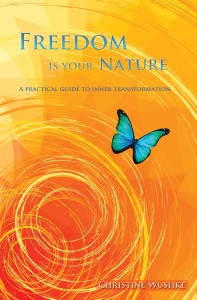Have you ever watched a baby move and play when they are content and just exploring their world? If you watch their fingers and toes curl and reach, the look of fascination on their faces, it’s pretty clear that the experience of being inside a body is meant to be a pleasurable thing.
So where does all that embodied pleasure go as we grow up and become adults?
As a person who has struggled with ongoing pain for many years, I have formulated many theories as to what happens to free enjoyment of embodied pleasure. Where do we lose touch with it? Why? And perhaps most importantly, how do we get it back?
Over the years I have devised multiple maps to navigate our way back to enjoyable embodiment in simple and achievable ways.
One simple and easy way to achieve this is by using myofascial tools, such as self-massage on a foam roller, for embodiment training.
There are so many ways to use these tools to relieve pain. A lot of them hurt, but you feel better afterwards (and I’m not going to knock that approach, because it does have its place!) but very few approaches talk about how to use a self-massage tool to gain access to a deeper quality of embodiment in general.
Why is embodiment important for pain management? So many reasons! But one key element is regulation of sensory inputs and our stored associations to them.
That’s a fancy way to say that we both learn and remember pain, and our experience of current pain can sometimes be a memory of past pain. But how do you know the difference?
Yup, you guessed it, embodiment!
Our survival-savvy nervous systems are wired to prioritize our attention toward inputs of potential threat or danger (and for good reason!). Which makes it very challenging to focus on pleasant sensations when there is ongoing pain.
But here is where the use of myofascial tools for embodiment training comes into play.
Because we can use deliberately placed props to turn up the volume on enjoyable sensations and to turn down the volume on painful ones.
Of course, it’s more complex than just this, which is why I have created a series of workshops devoted solely to understanding how pain works and what to do about it, so that you can enjoy being in your body again.
Come join us on March 16th to begin your myofascial yoga journey!

Dates: March 16 – 19 2023
Hours: Thursday through Sunday 10 am to 5:30 pm livestream on zoom
Platform: zoom
Phone: 403-701-9567 (text messages are welcome)
Investment: Sliding scale fee $299 – $899*
Registration information:
*Workshops during the pandemic are being offered at a sliding scale fee. Please feel free to select a payment option that suits your current situation.
Some partial scholarships are available, click here to apply.
Register Here:
- Pay via PayPal
- Register on Zoom (If PayPal does not take you to a registration webpage, please reach out to myofascialyoga33@gmail.com)
.
What is biotensegrity?
If you are a yoga teacher working with chronic pain populations, or even with athletes who want to sharpen their performance, incorporating the principles of biotensegrity is invaluable. Biotensegrity brings a focus on balancing the two forces of tension and compression. The word tensegrity is the blend of the words “tensile” and “integrity.” The philosophy is that when tension and compression are in integrity, the body is in balance and its energy can be used optimally and efficiently. Ideally, this looks like smooth, controlled, and efficient movement. When there has been injury or stress, the tension and compression relationship can get out of balance and postural tension in one area of the body can lead to excess compression in other areas.
How do these imbalances occur? Our bodies and brains love efficiency, so when fascia restricts due to injury or repetitive stress, our body needs to adapt to the new limitations (or demands) and find new pathways for movement forces. Sometimes this looks like a change in movement habits to avoid pain, and sometimes it is a lack of mobility or flexibility (for example, due to muscle protection).
For the sake of efficiency, the body will very quickly “learn” this new habit and integrate it as a new normal so that we can get busy focusing on other important things. This habit then becomes unconscious, meaning that you are doing it but you don’t know you are doing it. Incorporating mindfulness into movement practices is something we’ll be addressing in this training as one of the key elements to restoring the biotensegral balance of our movements. This allows us to become aware of old habits, to shift movements into conscious awareness, and to then choose balanced and healthy movements to reflect a more balanced and healthy life.
Lead Instructor
Guest Teachers



